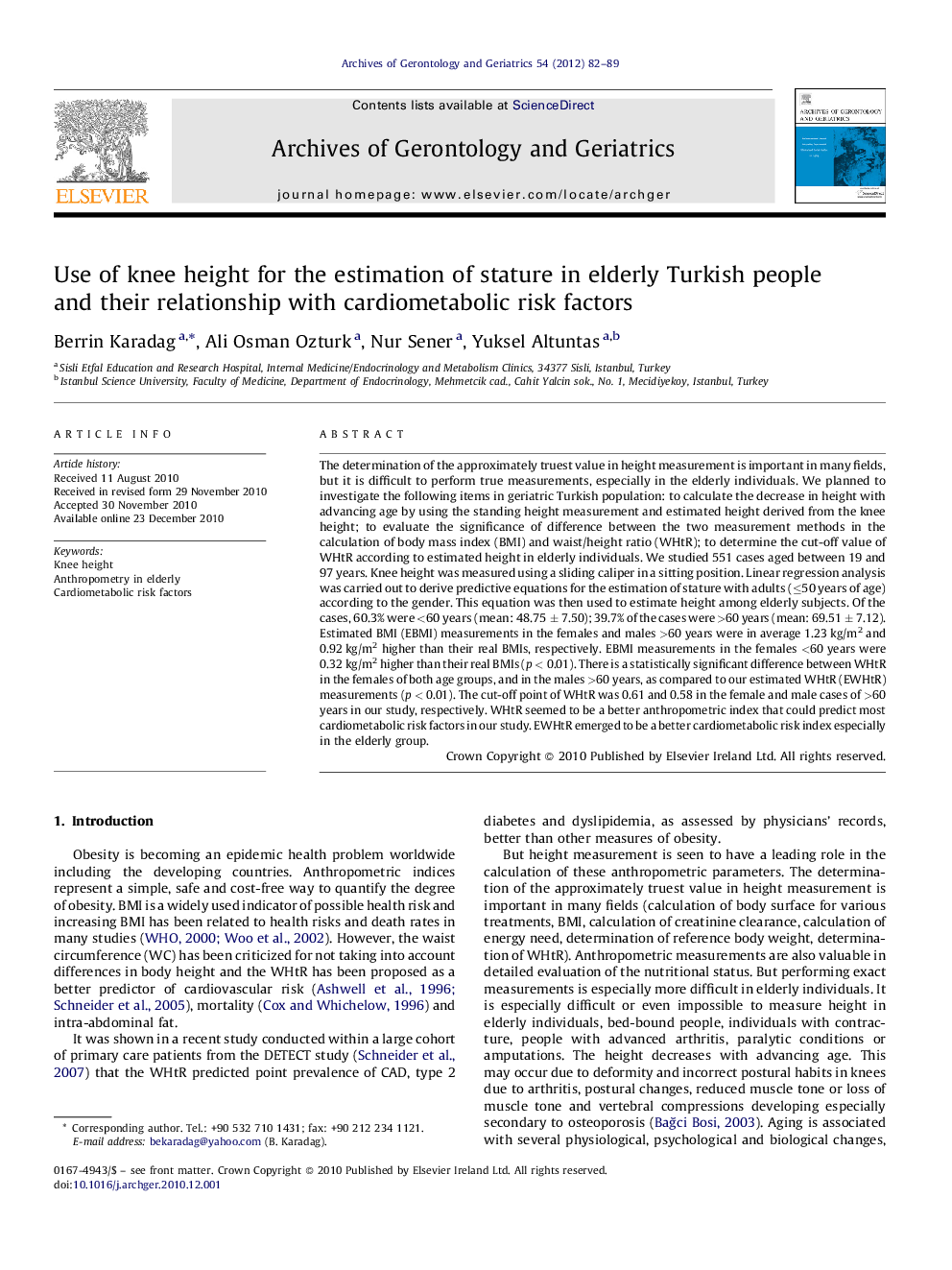| کد مقاله | کد نشریه | سال انتشار | مقاله انگلیسی | نسخه تمام متن |
|---|---|---|---|---|
| 1903166 | 1534451 | 2012 | 8 صفحه PDF | دانلود رایگان |

The determination of the approximately truest value in height measurement is important in many fields, but it is difficult to perform true measurements, especially in the elderly individuals. We planned to investigate the following items in geriatric Turkish population: to calculate the decrease in height with advancing age by using the standing height measurement and estimated height derived from the knee height; to evaluate the significance of difference between the two measurement methods in the calculation of body mass index (BMI) and waist/height ratio (WHtR); to determine the cut-off value of WHtR according to estimated height in elderly individuals. We studied 551 cases aged between 19 and 97 years. Knee height was measured using a sliding caliper in a sitting position. Linear regression analysis was carried out to derive predictive equations for the estimation of stature with adults (≤50 years of age) according to the gender. This equation was then used to estimate height among elderly subjects. Of the cases, 60.3% were <60 years (mean: 48.75 ± 7.50); 39.7% of the cases were >60 years (mean: 69.51 ± 7.12). Estimated BMI (EBMI) measurements in the females and males >60 years were in average 1.23 kg/m2 and 0.92 kg/m2 higher than their real BMIs, respectively. EBMI measurements in the females <60 years were 0.32 kg/m2 higher than their real BMIs (p < 0.01). There is a statistically significant difference between WHtR in the females of both age groups, and in the males >60 years, as compared to our estimated WHtR (EWHtR) measurements (p < 0.01). The cut-off point of WHtR was 0.61 and 0.58 in the female and male cases of >60 years in our study, respectively. WHtR seemed to be a better anthropometric index that could predict most cardiometabolic risk factors in our study. EWHtR emerged to be a better cardiometabolic risk index especially in the elderly group.
Journal: Archives of Gerontology and Geriatrics - Volume 54, Issue 1, January–February 2012, Pages 82–89